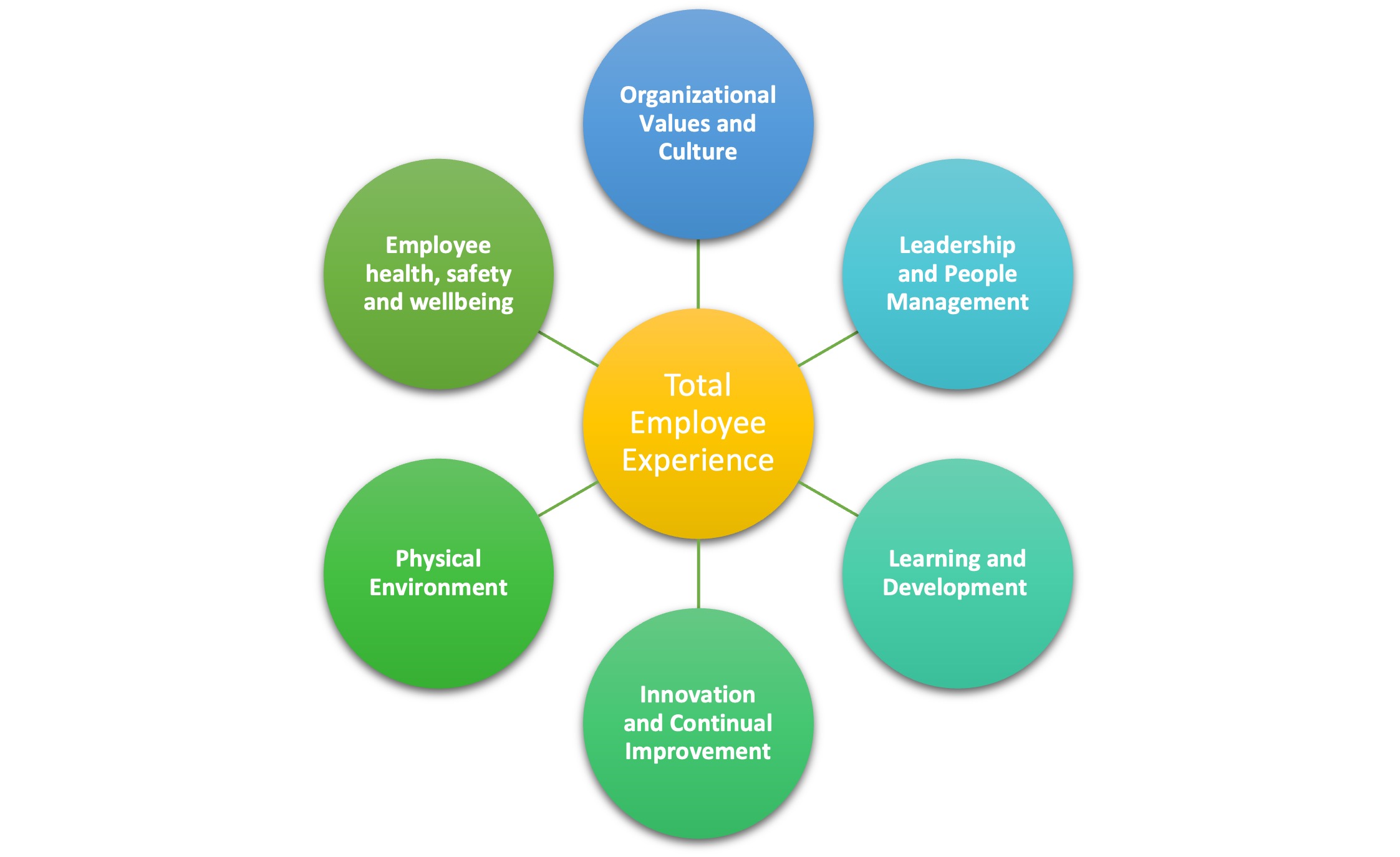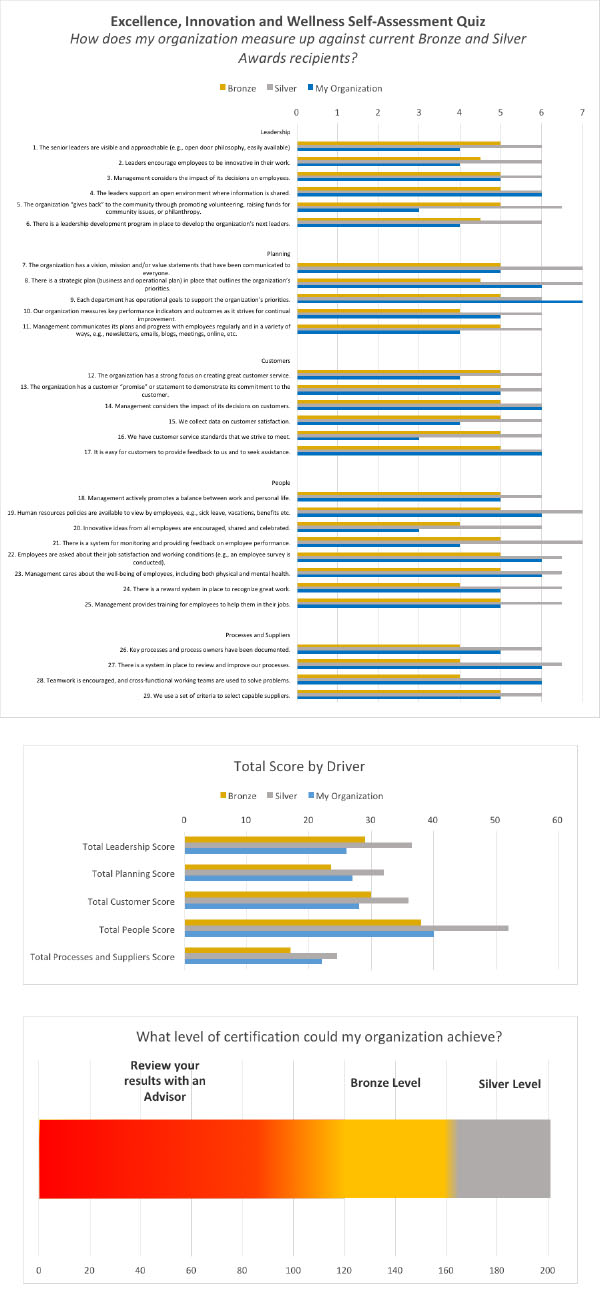
Written by: Kristen Dunn
For the majority of organizations, the customer’s experience is priority number one. In today’s world, options are plentiful, and if a customer’s experience is not seamless they will simply go elsewhere. As a result, strategy and resources are dedicated to retaining customers, reducing attrition, and attracting new customers. Top-performing organizations simultaneously turn this focus inwards, investing in the employee experience as a way to retain talent, make employees happy, attract new talent, and ultimately be the best at what they do.
What is the employee experience?
It’s a holistic term that considers the full spectrum of an employee’s experiences throughout their entire time at a company.[1] It begins at the interview process and continues through onboarding, development, everyday processes and workflow, the tools they use, the relationships they form, all the way through to their departure.
– When your employees’ experiences are positive, they are more likely to be happy, engaged, and able to get their work done efficiently. –
This experience includes an employee’s job design, workspace, manager, colleagues, and wellbeing. This means that everyone in an organization has a role in creating and maintaining a positive employee experience.
It begins at the leadership and management level, as they lay the foundation for the organization’s culture. Leaders are in a unique position of power that can start a positive, or negative, spiral.[2] But, employees play an important role here too. When faced with challenging situations, employees choose how to respond. Do they complain, gossip, and disengage, or are they empowered to find a solution? In this way, every employee affects the experience for other employees.[3]
How do we improve the employee experience?
Just as the definition of the employee experience is holistic, so is the approach to achieving a great employee experience According to Deloitte, “HR and business leaders face both the demand and the opportunity to rethink the roles, structure, tools, and strategy they use to design and deliver an integrated employee experience.“ [4] The image below illustrates the most important factors that contribute to a positive employee experience:

Flynn, J. Mazor, A. H. (2017, Feb 28) The employee experience: Culture, engagement, and beyond.
Retrieved from: https://www2.deloitte.com/us/en/insights/focus/human-capital-trends/2017/improving-the-employee-experience-culture-engagement.html
The COVID-19 pandemic has significantly impacted the employee experience. Remote work is the top reason why the employee experience has been disrupted. New ways of working, collaborating, and communicating have changed how companies operate and manage their workforces.[5]
Some of the factors that affect the employee experience, such as employee growth and development. may be put on hold temporarily. However, there are other factors that employers need to focus on right away:[6]
- Understand your employees’ needs and concerns by encouraging them to share their thoughts
To improve employee experience during these unprecedented times, you first need to define what shapes their experience. You need to get a better understanding of the challenges they may be facing in this new working environment.[7]Implementing a company-wide survey is the best way to achieve this. This will give you the information you need to better support your employees and prepare them for success.The key is to act on the insights from this data, to improve the employee experience while fostering engagement during challenging times.
- Hold leaders accountable for building trust in the workplace
Employees want to feel support and encouragement from those who are leading the company and have a better understanding of the impact the crisis has on the organization.[8] Leaders need to be authentic and honest in order to build a positive employee experience for employees.[9]
- Enable managers to build better relationships with their teams
A manager’s role critically influences the employee experience. It is the manager’s job to ensure that team members understand and are aligned with the company’s purpose, objectives, and priorities, and make sure that employees understand how their work relates to the company’s strategy.[10]
Organizations need to enable their managers to better support their teams using innovative communication and collaboration technology solutions. This is even more critical now, when many employees are physically disconnected.[11]
- Help your employees stay connected with their colleagues
As mentioned above, every employee impacts the experience for others. Working collaboratively on projects can be more difficult when communication is virtual, but utilizing team rituals, scheduled check-ins, and collaboration software can help here.
Engaging your entire workforce in daily two-way company conversations is what will help improve your employees’ experience. These conversations should encourage the employees to speak up and share their thoughts on important topics.[12]
- Make work meaningful and empower your employees
When responding to challenges, encourage your employees to share their own ideas and lead their implementation. In this way, you can make their work more meaningful and rewarding, which boosts your employees’ morale and experience.[13]
How do we get started?
Creating a holistic approach to the employee experience demands better tools and programs to capture employee feedback continuously. Utilizing a survey tool can make this possible. Begin by understanding the baseline for your organization’s employee experience – then adjust, adapt, and repeat.
The Excellence Canada Total Employee Experience Survey will provide you with the data needed to align your employees’ experiences with your company’s purpose, brand, and culture. This tool can set you on the right path to ultimately inspiring employee commitment and improving your company’s performance.

How can Excellence Canada help?
Excellence Canada’s research-based Organizational Excellence Standard (OES) provides a strategic umbrella for adaptation and harmonizes various practices into an aligned management system for pursuing organizational goals.
The Standard will give you the tools and direction you need to develop a sustainable, high-performing organization that attracts and retains top talent and innovative minds. You’ll see through a lens that focuses on quality, innovation, wellness, equality, diversity, and inclusion. How? By following a guide that builds a culture of excellence.
The OES promotes effective leadership, healthy employees, and a work environment focused on respect, equity, and inclusivity. Organizational Culture breaks down into nine elements woven into the Desired Outcomes of the OES. Developing a high-performing organization that incorporates, communicates, and reinforces these elements can shape both your employee and the customer experience. This can only be accomplished intentionally – with the right framework, tools, direction, and focus.
Learn more about how the OES can help your organization, and how to get started.
